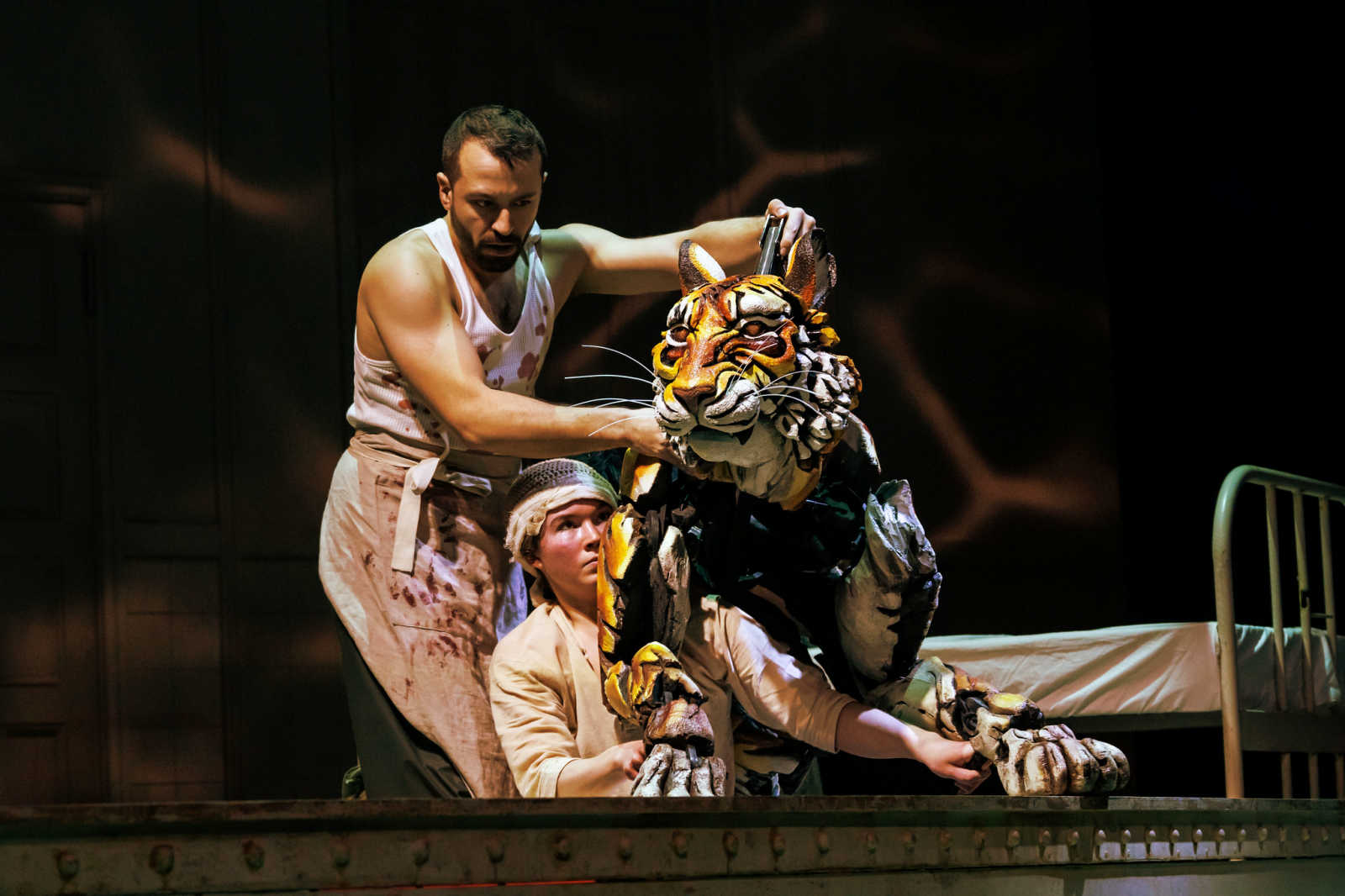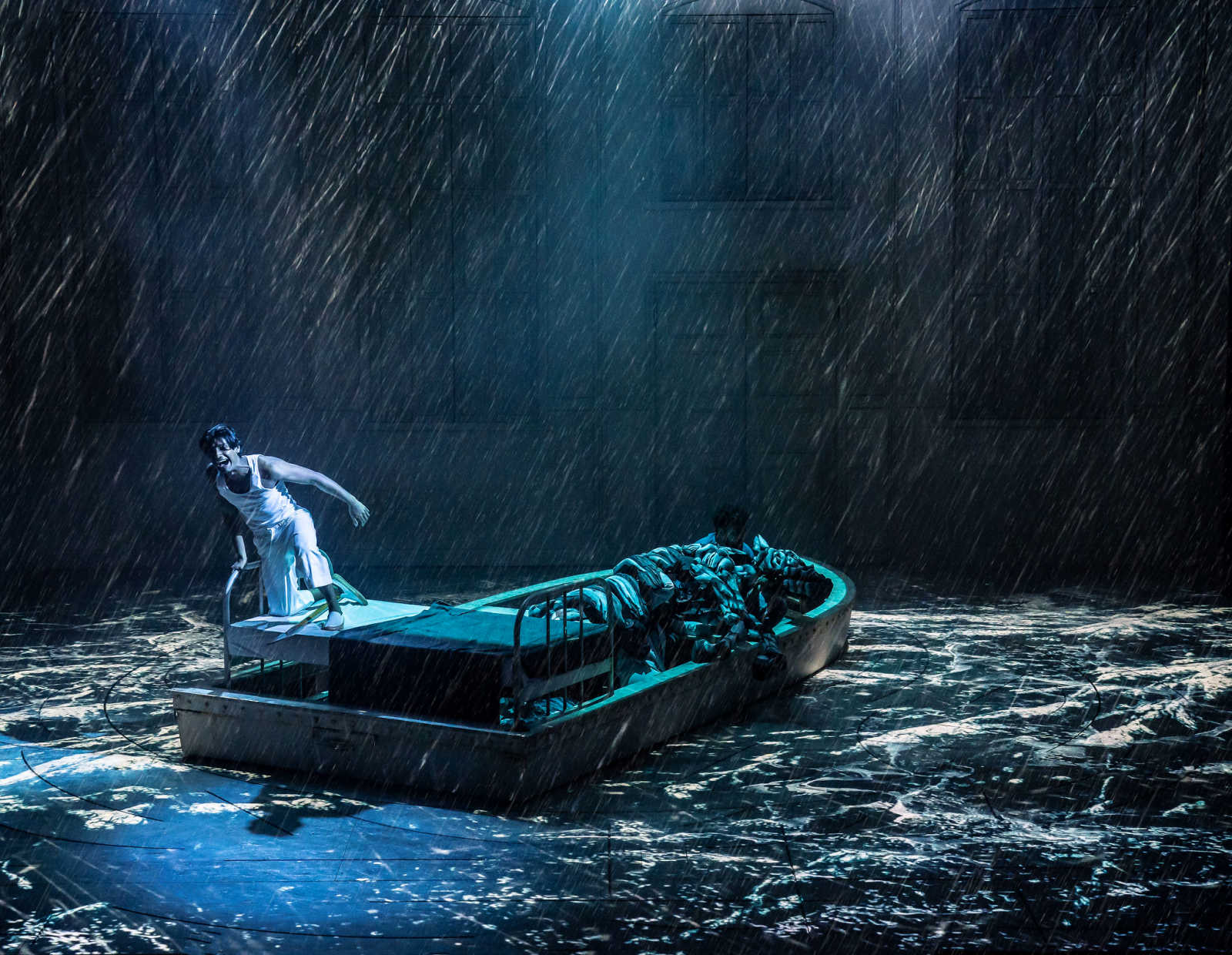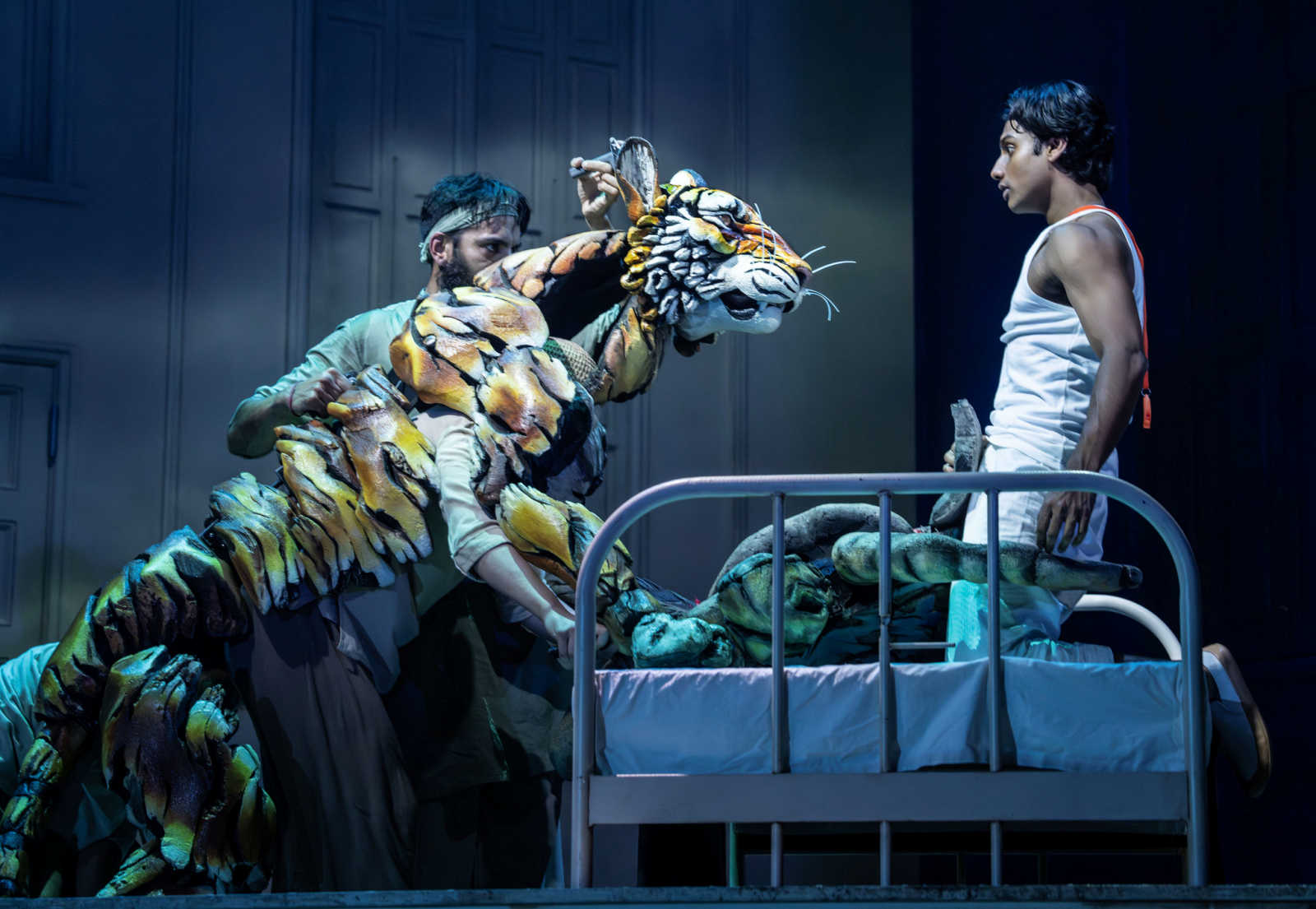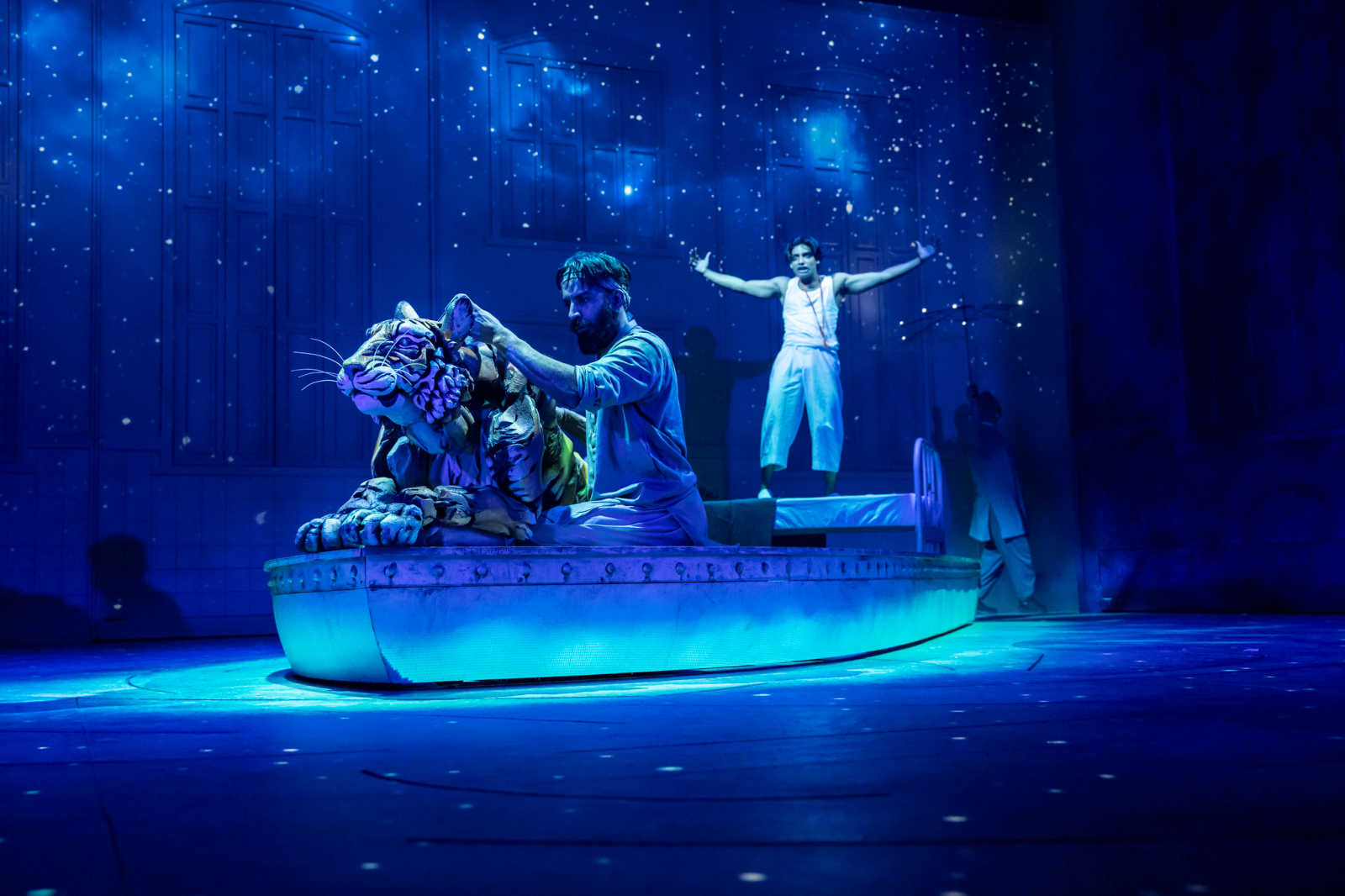Manchester Theatre News & Reviews
REVIEW - Life Of Pi is a work of art, and glorious evidence as to what theatre and creativity can achieve
 BOOK LIFE OF PI TICKETS HERE!
BOOK LIFE OF PI TICKETS HERE!
On Wednesday, we were treated to another fantastic theatre production. Read what our reviewer Karen Ryder had to say about Life Of Pi at The Lowry, Salford...
Life Of Pi is a story that at first glance seems impossible to transfer onto a stage. It is full of wild animals, half of it is set at sea, it involves a huge cargo ship and a small lifeboat, and the rest of it flits between India, a hospital room and a zoo! Not only has it successfully transferred onto stage, but it has also come alive in such a stunning and brutal way, it is no wonder it won numerous Olivier and Tony Awards. This show is so rooted in its desire to present the magic of imagination, spirit and philosophy as equal partners with darkness, loss, loneliness, and struggle, that the audience are able to suspend their disbelief with ease and connect not only with the human characters, but the animals too.
Lolita Chakrabarti has adapted the Yann Martel novel for stage with a transparent honesty of the stark realities of survival, yet it is still peppered with the beauty of the will and strength of the human mind and soul. This is a story being told back to us by Pi, and the layout of this, going backwards and forwards in time as elements of it are recalled to us, is some of the clearest storytelling I have seen. There is no uncertainty in what could potentially be a confusing story. You are clearly guided through each memory, each trial and tribulation, each challenge, and each joy with complete clarity. This is of course complemented without a shadow of a doubt by a clever and precise set design by Tim Hatley, but it is all guided by such a streamlined adaptation.
For those who don’t know, Life Of Pi tells the story of Pi, a young boy (or girl in tonight’s production) who lives an idyllic life in India with her family, and they reside in a zoo! Pi and her brother are smart, do well in school, have a good family, and get to look after impressive animals in their spare time. The issue is with mounting social unrest in India, so when the zoo falls victim to vandalism and threat, with elephants being fed apples containing razor blades, they make the difficult decision to leave their beloved home behind, pack up their entire zoo, and migrate to Canada to start afresh. But an unexpected storm hits the cargo ship they are travelling on, and Pi finds herself stranded on a lifeboat alone, apart from a hyena, an orangutan, oh yes – and a Bengal tiger named Richard Parker! She has to face ferocious realities and challenge her own beliefs and morals in order to stay alive and survive. The real intrigue of the story comes through officials not believing her story of survival when she is eventually found on dry land. She battles with their beliefs, contests their philosophies as they state they can only believe what they see. When she presents an alternate version of the story, we are left wondering which one is the truth. Both are ferocious but one seems tempered by the idea that it is wild animals behaving in such a manner. To believe that humans could do the same seems too ruthless to digest, and so we are left with a conundrum. Do we believe the near impossible version to temper our psyche into coping, or do we deal with the unbearable trauma of the human version? It was the question on everyone’s lips after the show had finished, and one I am still pondering today. The mind is such a powerful thing. Did Pi’s mind create the animal version to protect her? Is it entirely real to her? Or did it really happen? Such an interesting concept. Can impossible journeys really happen? Every part of me screams YES to that question. The transfer of Life Of Pi onto the stage must surely have seemed like an impossible journey in itself at the start, but put the best creative minds together, and anything becomes possible.
The design of this show is encaptivating. It is so detailed and well thought out that it looks simple. I know it is not simple in the least, but that is its joy. It easily takes us from a stark hospital room to the ocean. First, the plain white wall behind Pi comes alive and starts rippling, echoing the water, as a boat comes on in two pieces from either side of the stage and forms together, using the hospital bed as its elevated feature. Back to the hospital room before its previously invisible windows open up and trees, birds and nature are welcomed in, and giraffes pop their heads through. Moving shadows are projected of trees, butterflies and free standing railings with vines are brought on that are playfully moved around to create the various cages for the animals in the zoo. Then, again from the bland hospital room, the walls open up this time, revealing vibrancy, colours, market stalls and we are transported into the heart of India on market day. The colour and accessories are then stripped away to reveal stark scaffolding and rigging that form the belly of the cargo ship. The windows are use as loading bays at the docks, and put all of these scene changes together with atmospheric music and sound (Andrew T. Macay & Carolyn Downing), the subtle yet consuming video design (Andrzej Goulding) and immersive lighting, that even had the whole theatre rippling in waves, and drenched in starlight (Tim Lutkin & Tim Deiling), and you are fully immersed into Pi’s story, from the love to the fear, the joy to the grief, and the impossible choices she has to make in order to survive.
The brilliance of this show is that nothing is hidden. Everything is there in plain sight, yet your mind still filters it out, a willing participant in the joy of theatre, creativity and make believe. The raft which Pi makes to initially avoid Richard Parker is a perfect example. It floats aimlessly across the sea. We can overtly see this is done via a rope on each end that gently pulls it back and forth, side to side, yet even though your mind acknowledges this, it chooses to ignore it, instead, just seeing a raft on the water, moving in the current. And this approach is the magic of the show. It trusts its audience. It trusts that because we aren’t spending our time looking for the tricks and illusions, we will instead suspend our disbelief and go with the magic of imagination. And we do. It trusts that we still have that in us, even as adults, and it is brilliant.
Then, of course, there are the puppets. To call them puppets is a risk to understating and underselling what these creations are, because they are beyond the traditional idea of a piece of wood moved by string, or your hand stuck inside a body making it talk. Life Of Pi puppets, designed by and brought to life by Nick Barnes and Finn Caldwell use the skills of the actors movement, bodies, emotions, and reactions to bring these animals to life in a visual, visceral and powerful way. Actors voice them, so you hear a Bengal tiger breathing, you hear a zebra in pain, you hear and feel these guttural and animalistic sounds and you believe them. Actors sit inside the structure of the puppets so they have real movement, but they also work around them on the outside, being its head, or its tail, meaning every part of the animals have an actor who is able to connect and portray meaning through every nuance. Nothing is by chance. I have been up close to Richard Parker, and even though I knew it was a puppet and I was aware it was being moved by actors as I could see them, my brain ignored all of that because this Bengal tiger was in front of me, prowling, angry, and very real. I shrunk away from it, and you saw audience members near the front of the stage having exactly the same reaction. This is equally a brilliant choice of direction by Max Webster because at no point are these animals made to be cute. They are beautiful and majestic yes, but cute? No. They are powerful, realistic creatures, whose instinct is survival at any cost, and it is a mistake to think that because you once fed them in a zoo, that they won’t lash out when under threat. The ferociousness of the animal world is not shied away from, and is savage to witness at times, especially when they are slaughtered, killed, and feasted upon, with swatches of red material flooding out of them as blood, guts, and intestines. 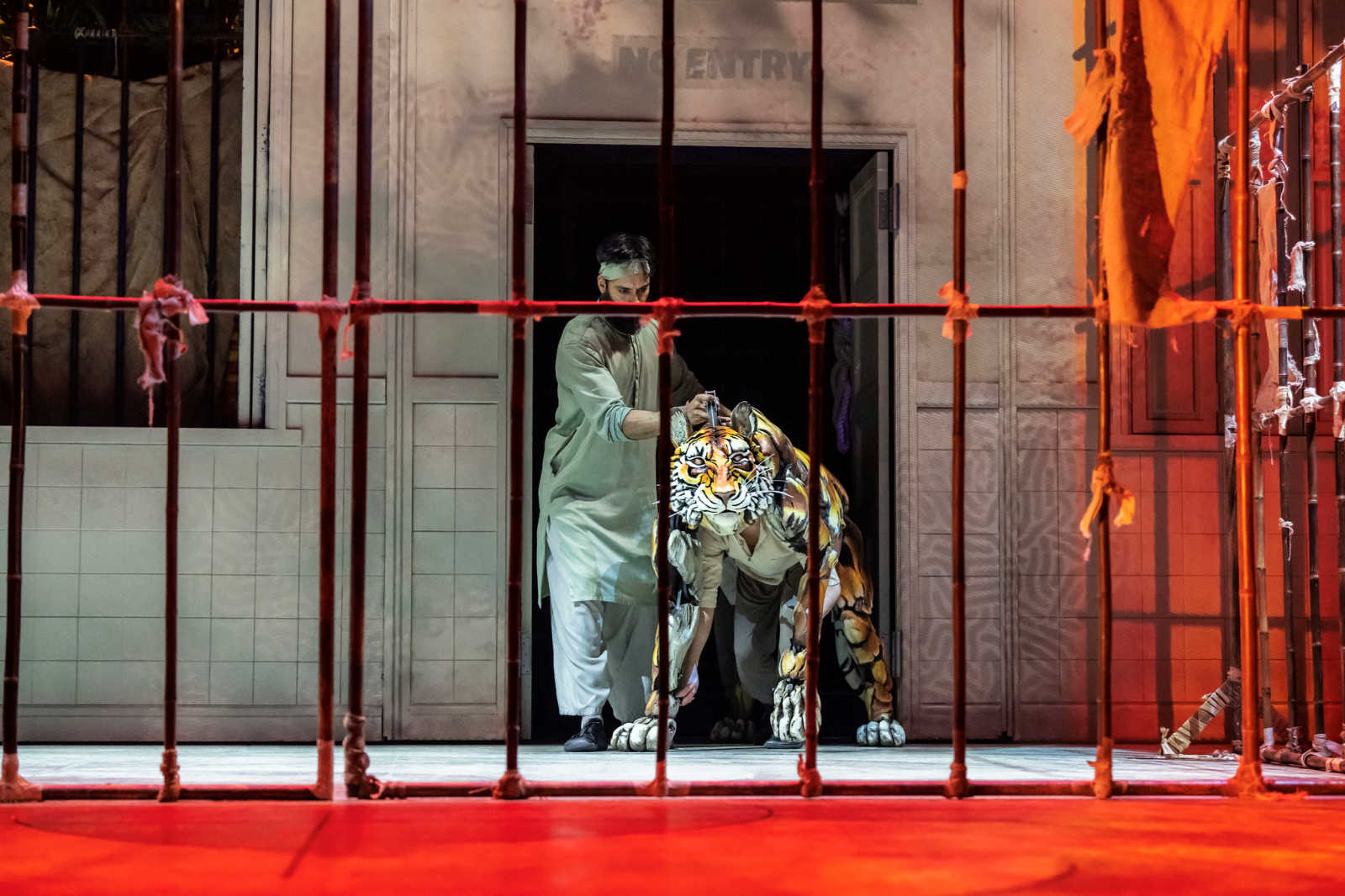
Tanvi Virmani played Pi at tonight's performance and was an exceptional alternate Pi. Rarely off the stage, she needed to be engaging, believable, and take our hand and lead us into this story with a willingness to believe. Right from the start, it was never in question as to whether this was possible, because Virmani WAS Pi. A flawless mix of likeability, physicality, and an endless range of emotions allowed us to see Pi stripped of her idyllic life and tested and tortured beyond any acceptable form of endurance. She interacted with the puppets so strongly that she left no room for doubt, and her movement and agility was seamless. Whether she was being lifted in the air and bobbed around on her raft, or diving from the lifeboat with the aid of other actors lifting her into the air, to truly create the arc of a dive, it was phenomenal. Akash Heer, Romina Hytten, and Katie Kennedy-Rose combine talents to bring Richard Parker to life in a stunningly fearsome yet beautiful way. Every tilt of the head, paw move, swish of the tail is readable. They have created a dominated life force that will genuinely make you hold you breath and feel authentic fear as Pi has to fight to survive. This is something you simply have to see to believe, for my words won’t do it justice. And you won’t believe me until you experience being in the presence of Richard Parker for yourself. Goldy Notay as Amma, Ralph Birtwell as the father, and Vinesh Veerasami as Rani, complete Pi’s immediate family, and establish a brilliant dynamic of love, security, authority, and complexities that all families behold.
Life Of Pi is a work of art, and glorious evidence as to what theatre and creativity can achieve. It challenges, yet trusts its audience, and doesn’t attempt to dampen any of the unpleasant moments of life, giving it to us full throttle. Therefore, it treats us, the audience, as equals and this is a breath of fresh air. We are presented with a tale of struggle, endurance, and impossible circumstances, yet we are captivated by the resilience, spirit, and endurance that overcomes all of it. It gives us hope to never give up, never give in, and in a world full of unpredictability, to never say never.
WE SCORE LIFE OF PI...
Life Of Pi is on at The Lowry, Salford until Sunday 7th January.



